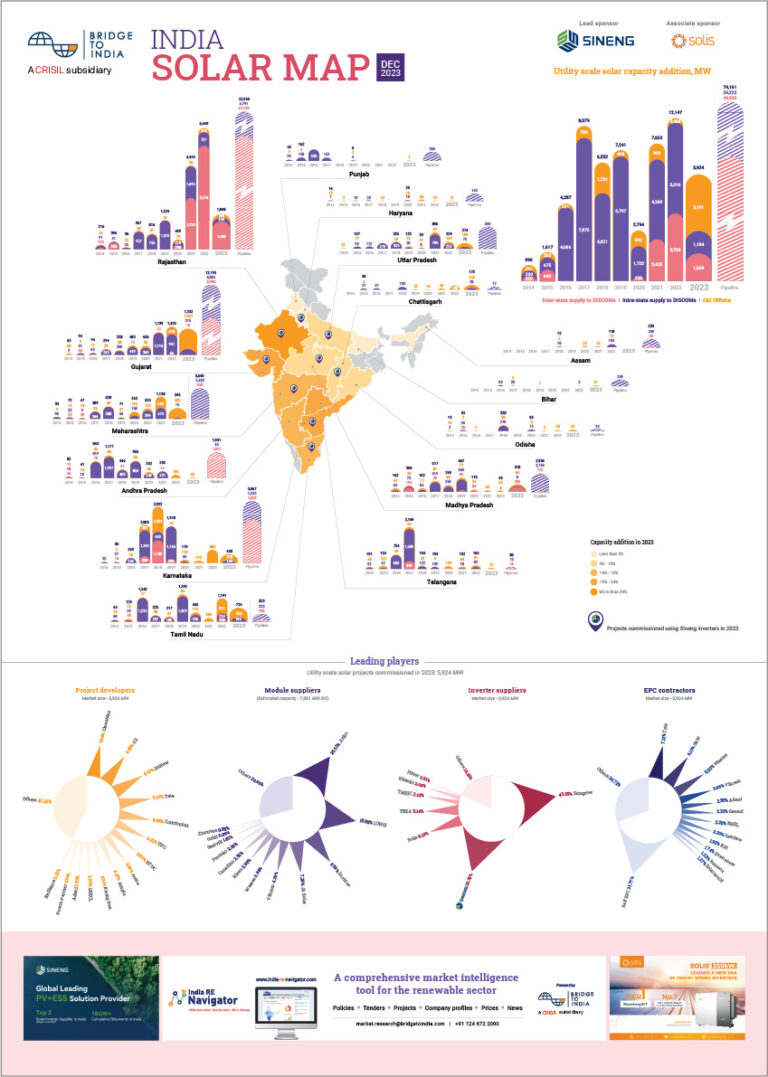Central Electricity Regulatory Commission (CERC) has issued its final decision in response to appeals filed by Adani and Azure against NTPC and SECI respectively for ‘change in law’ compensation claims arising from GST implementation. It has opined that implementation of GST constitutes ‘change in law’ as defined in the respective PPAs. It has also ruled that project developers can claim compensation if they can provide precise details of all goods and services procured by them specifically for each project together with relevant invoices and an auditor’s certificate. Importantly, CERC has opined that the developers should be compensated for their extra financial outlay through an immediate one-time settlement by power procurers rather than through an upward adjustment in tariffs. But it has somewhat incoherently refused any compensation for increase in O&M costs as O&M outsourcing has been deemed a voluntary “commercial decision” made by the developers.
- CERC’s decision is welcome but it still leaves a lot of ambiguity for developers;
- The developers are appealing further to CERC to allow compensation through upward tariff adjustment;
- A final decision on tax rates is still awaited from the Ministry of Finance in view of the inconsistent rulings by different state tax authorities;
CERC’s verdict comes after the Ministry of Power directed CERC to approve ‘pass through’ impact of all change in law events within a month of petition filing date. CERC decision is highly desirable. However, it still raises many doubts and a final solution may be many months away – state governments and DISCOMs may actually wait for a final decision from individual state regulators, who may take a different view. Moreover, as evident from the CERC ruling, the DISCOMs have taken the view that any decision in respect of PPAs is not binding on them if they are not party to it. So, a separate process may have to be undertaken for power sale agreements between DISCOMs and SECI or NTPC.
Expecting SECI and DISCOMs to make upfront payments is also unrealistic because of their precarious financial position. Although the amounts involved are relatively small – compensation is expected to be about INR 500,000 (USD 6,849) per MW – they are likely to argue inability to pay and/or delay payments. SECI would wait for corresponding payments from DISCOMs under its power sale agreements (PSAs) before paying out to the developers. The developers can anticipate these problems and we understand that they are appealing further to CERC to allow compensation through upward tariff adjustment, as also recommended by the Ministry of Power.
There is yet another major uncertainty associated with GST, which is applied at different rates – typically ranging between 5-28% – to various goods and services used in solar projects. A 5% concessional rate is applicable to ‘solar power generating systems,’ but many state tax authorities have taken a different and inconsistent view. Uttarakhand is the only state to endorse the 5% rate. Maharashtra, Rajasthan, Andhra Pradesh and Karnataka have taken the view that 18% rate is applicable to solar plants. The industry has been seeking urgent clarity from the Ministry of Finance in this regard.
GST has been a major pain point for the industry and it is unfortunate that we are still far from a solution despite more than fifteen months having elapsed since its implementation.












